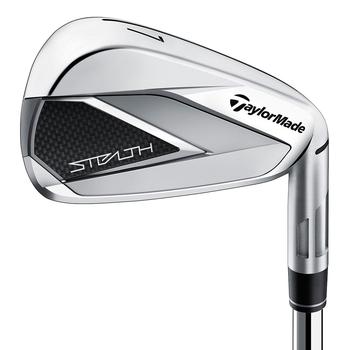There are irons that are designed offer golfers the most ball speed and distance possible so that if your technique and form is right but you struggle to generate power on your shots you can start dominating on the fairways. For golfers who have all the power they need on their shots but lack the accuracy and form there are a wide range of golf irons designed to help create much more accuracte shots, even on mishits.
You will hear the words "game-improvement irons", "Player distance irons" and "Player Irons" thrown around by golfers who are looking for the right set of golf clubs to enhance their games. These terms are a polite way of saying which golf club sets are suited for the Pros and higher level players, and which clubs are best for low level players and golfers who may have just started.
While you may think of yourself as a high level player, the difference in control, power and distance for a set of "Player Irons" compared to "Game improvement irons" is huge and can severly affect your game negatively if they you try to run before crawling.
So here is a short breakdown of what an iron is designed to be used for and what you can expect.

Type of Irons

The two main styles for an iron are cavity-back, made with a hollowed out back of the club, or muscle-back, which has a full back that is made from one continuous piece of metal.
If irons aren’t the strongest tool in your golf game it is probably best to go for a cavity back club. These irons use perimeter weighting which means that the club twists less during impact so more energy is transferred to the ball. This type of iron is much more forgiving, so even on poorly struck shots players are able to maintain distance and accuracy.
Muscle back irons are for golfers who play at a higher level as they offer increased performance and shot shaping, but a lot less forgiveness so if a shot is mishit you’ll know about it.
Shafts - Graphite Or Steel
Having the right shaft for your golf iron is very important as it can actually be the difference between how easily you are able to loft the golf ball up into the air and how much effort and power that is needed on every shot.
If you are a golfer who may struggle with the swing speed and overall distance on your shots, Graphite will be the goto shaft for your irons as they Graphite shafts offer much more distance compared to steel. But why is this? Well, it's because graphite is a lighter material comapared to steel and so allow for much faster swing speeds to be created because their is less weight to fight with to on your swing.
While having Graphite shafts is a great addition to any golf bag for speed and distance it does usually mean that graphite shaft options are a little more expensive than the Steel shaft golf clubs.
Even though Graphite is the faster option Steel golf clubs do have some very useful benefits. The main advantages of having a set of irons with steel shafts are that they offer greater durability and so can last much longer, sometimes close to 10 years, and also allow for much more consistent shots. Graphite shafts tend to twist a little when a shot is played off centre and so may force the golf ball to fly off target. Steel is much harder to twist and so offer much more forgiveness for mis-hits.
How many irons do you need?
Usually you will need seven to eight clubs in your set of irons - 3,4,5,6,7,8 and 9 irons - then normal one or two wedges such as a Pitching Wedge and Sand Wedge. Most sets of irons come in either a 4 Iron to a Pitching Wedge or a 5 Irons to Pitching wedge. Having a complete set like this means that golfers have the right number of irons to deal with any situation on the golf course as each club has a different angle of loft to launch the golf ball. With golf clubs that are suited for long iron shots to reach the greens from further away, to clubs that are perfect for shorter shots that need the ball to come to a sudden stop on the green.
Long, Mid and Short Irons
The irons in your set are broken down into three different groups that match the performance that they offer.
Long irons, which offer the most distance on shots, typically range from 2 to 4 irons, however because the 2 iron is becoming increasingly rare 5 irons are now being considered long irons too. Long irons have the lowest loft and the longest shafts, and are designed to be used for further distance shots, typically 180 to 260 yards.
Mid irons range from 5 to 7 irons that are generally used for shots from the fairway and from the rough for long approach shots. Because of the loft that these irons provide, with a steeper angle compared to the long irons, these clubs are best for hillier fairways as to avoid a low rise.
Short irons range from 8 up to a pitching wedge are often called “scoring irons” due to being used when a player is closer to the green, with a possibility of a kind roll that has the ball finding the hole.
These clubs have a much higher loft which allows for a much more controlled shot that is predicated on accuracy rather than range.